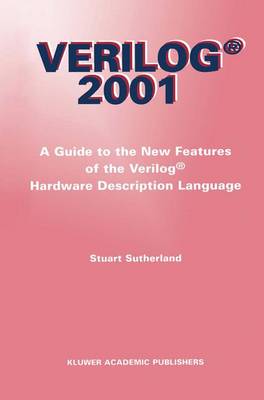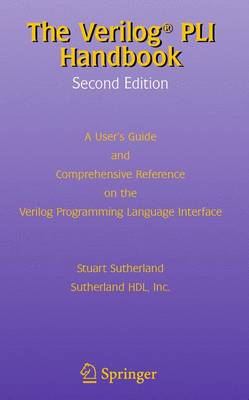The Springer International Series in Engineering and Computer Science
2 primary works
Book 652
by Phil Moorby The Verilog Hardware Description Language has had an amazing impact on the mod em electronics industry, considering that the essential composition of the language was developed in a surprisingly short period of time, early in 1984. Since its introduc tion, Verilog has changed very little. Over time, users have requested many improve ments to meet new methodology needs. But, it is a complex and time consuming process to add features to a language without ambiguity, and maintaining consistency. A group of Verilog enthusiasts, the IEEE 1364 Verilog committee, have broken the Verilog feature doldrums. These individuals should be applauded. They invested the time and energy, often their personal time, to understand and resolve an extensive wish-list of language enhancements. They took on the task of choosing a feature set that would stand up to the scrutiny of the standardization process. I would like to per sonally thank this group. They have shown that it is possible to evolve Verilog, rather than having to completely start over with some revolutionary new language. The Verilog 1364-2001 standard provides many of the advanced building blocks that users have requested. The enhancements include key components for verification, abstract design, and other new methodology capabilities. As designers tackle advanced issues such as automated verification, system partitioning, etc., the Verilog standard will rise to meet the continuing challenge of electronics design.
Book 666
by Maq Mannan President and CEO, DSM Technologies Chairman of the IEEE 1364 Verilog Standards Group Past Chairman of Open Verilog International One of the major strengths of the Verilog language is the Programming Language Interface (PLI), which allows users and Verilog application developers to infinitely extend the capabilities of the Verilog language and the Verilog simulator. In fact, the overwhelming success of the Verilog language can be partly attributed to the exi- ence of its PLI. Using the PLI, add-on products, such as graphical waveform displays or pre and post simulation analysis tools, can be easily developed. These products can then be used with any Verilog simulator that supports the Verilog PLI. This ability to create thi- party add-on products for Verilog simulators has created new markets and provided the Verilog user base with multiple sources of software tools. Hardware design engineers can, and should, use the Verilog PLI to customize their Verilog simulation environment. A Company that designs graphics chips, for ex- ple, may wish to see the simulation results of a new design in some custom graphical display. The Verilog PLI makes it possible, and even trivial, to integrate custom so- ware, such as a graphical display program, into a Verilog simulator. The simulation results can then dynamically be displayed in the custom format during simulation. And, if the company uses Verilog simulators from multiple simulator vendors, this integrated graphical display will work with all the simulators.

